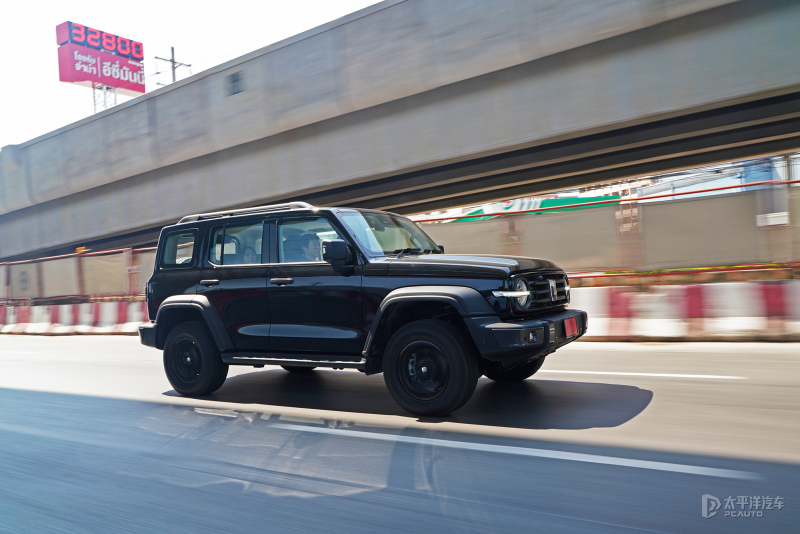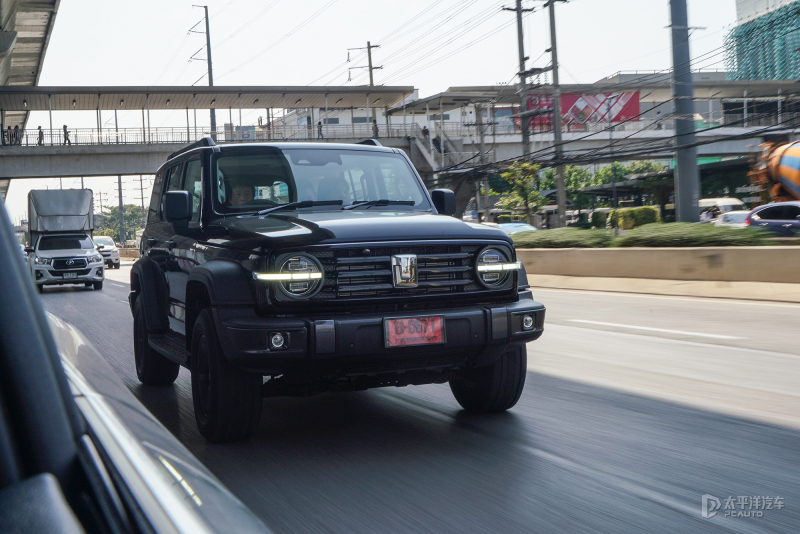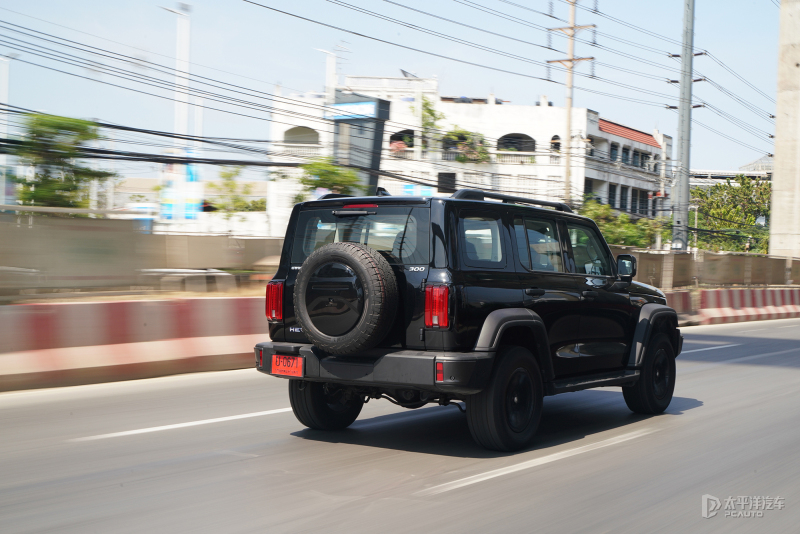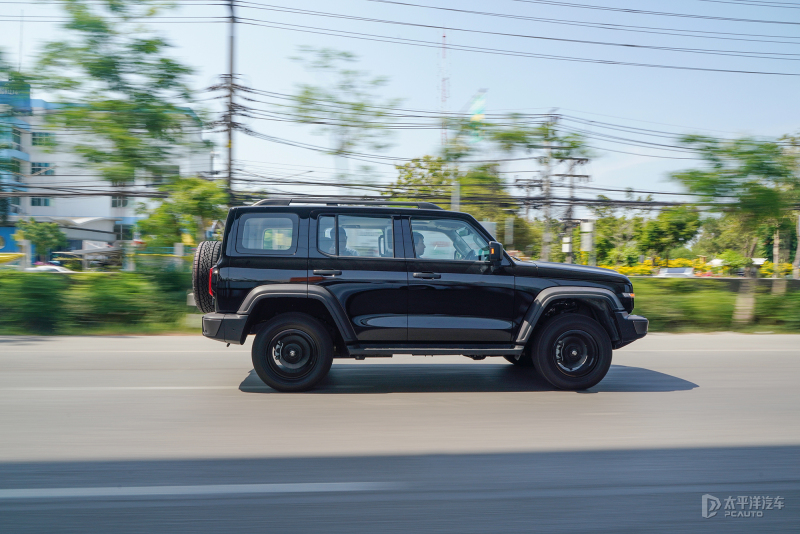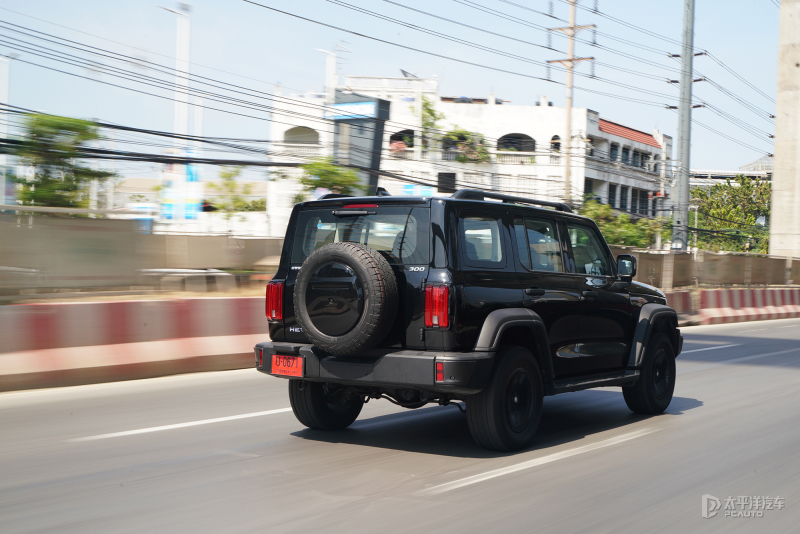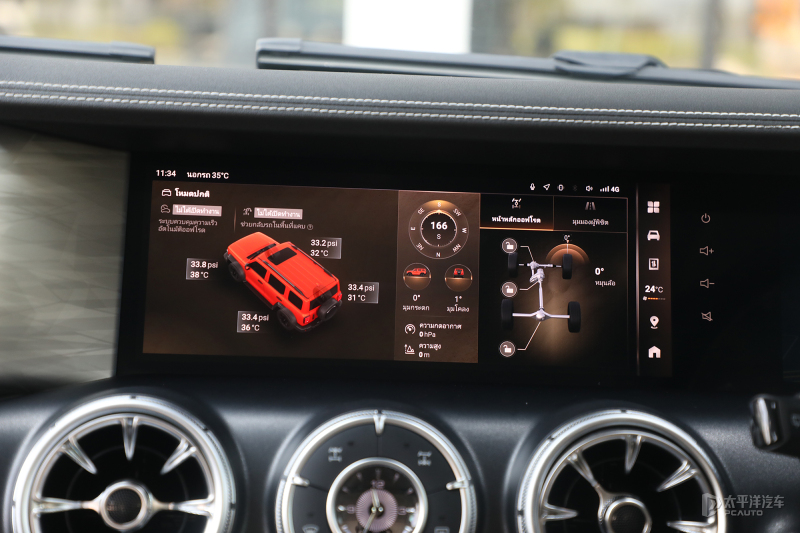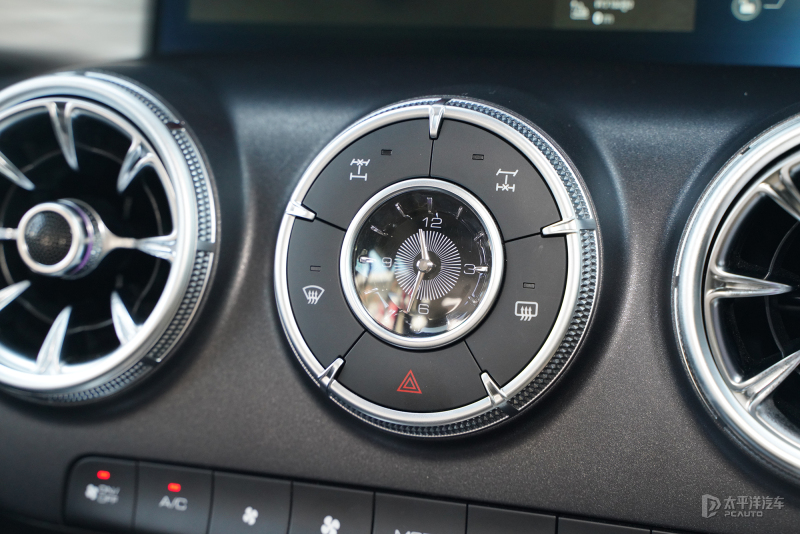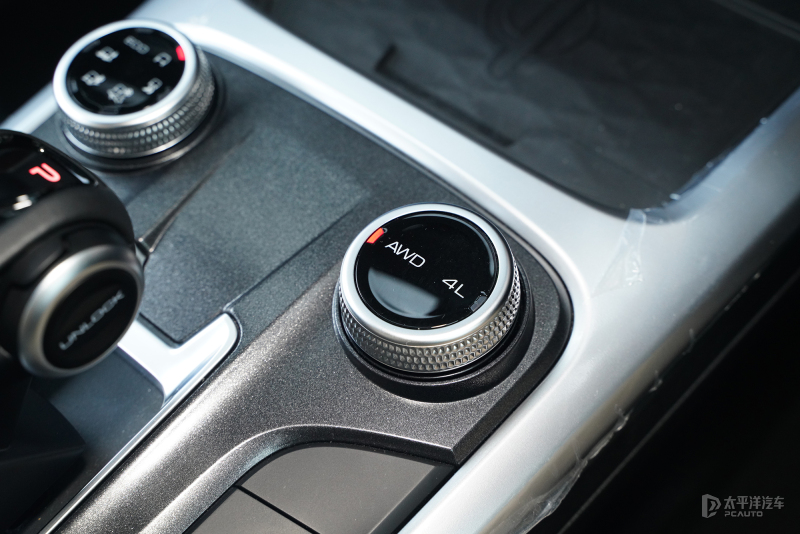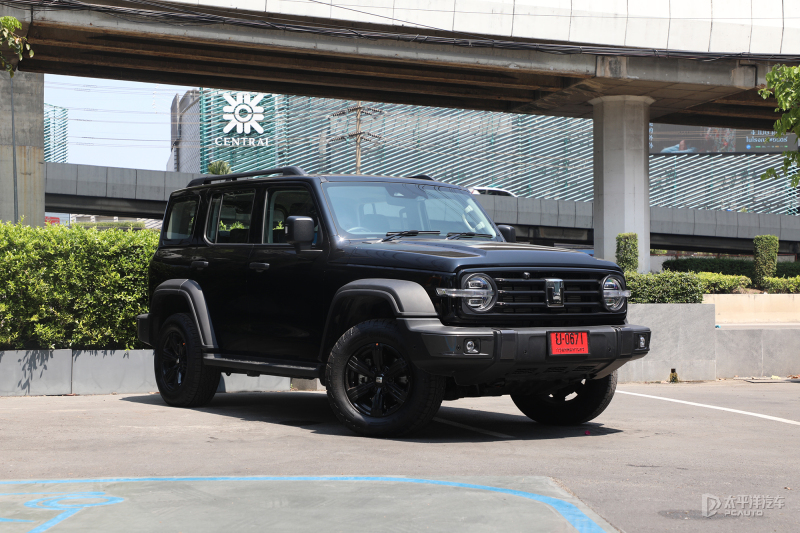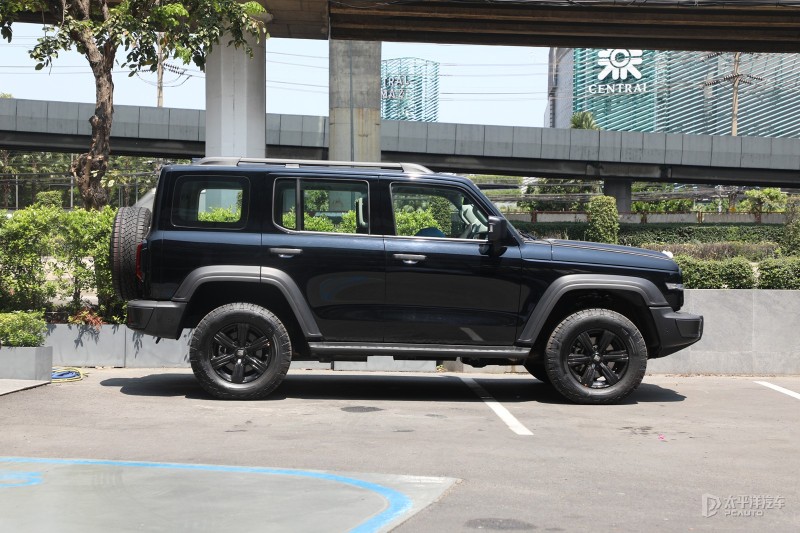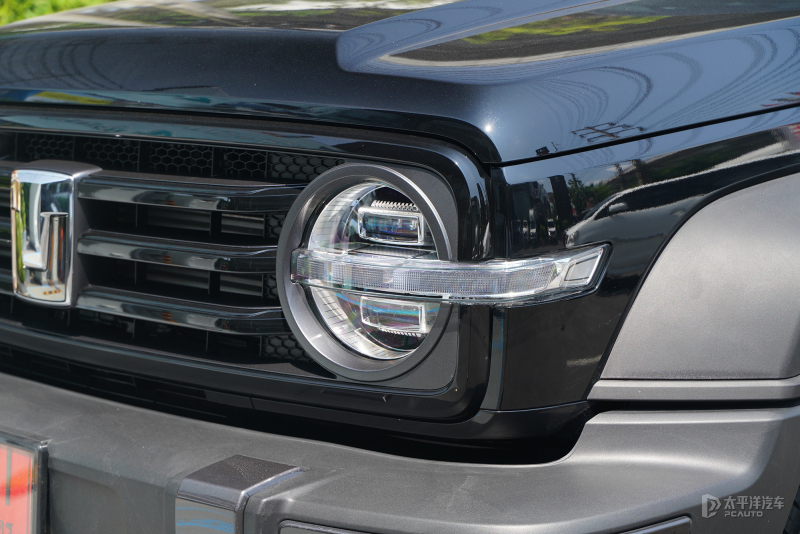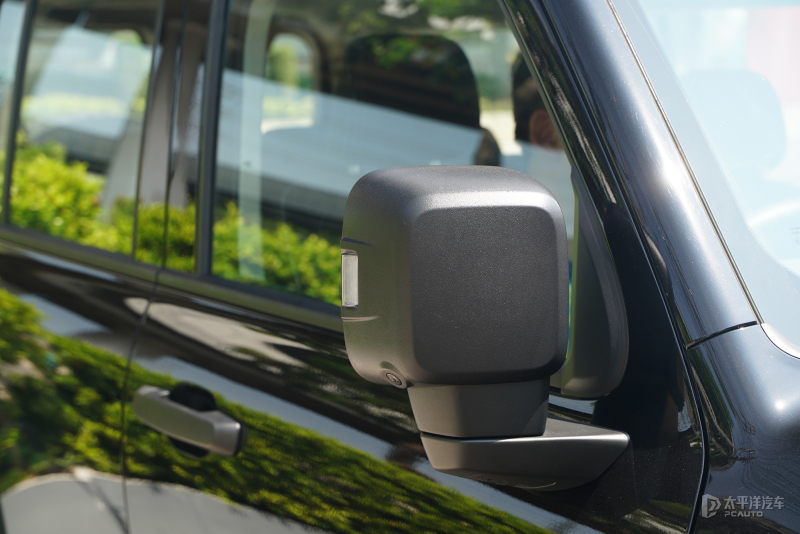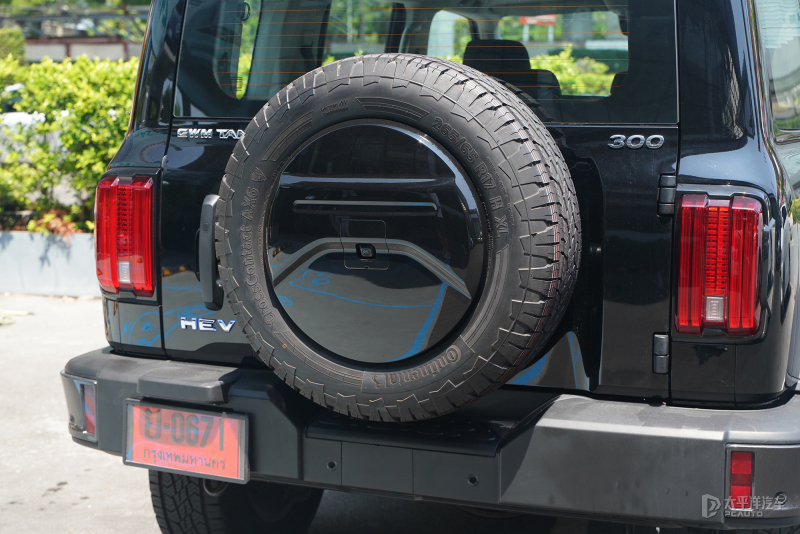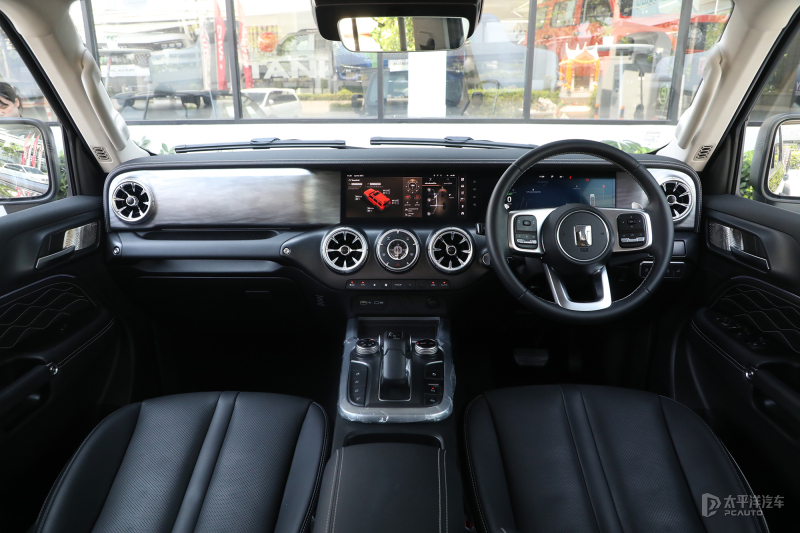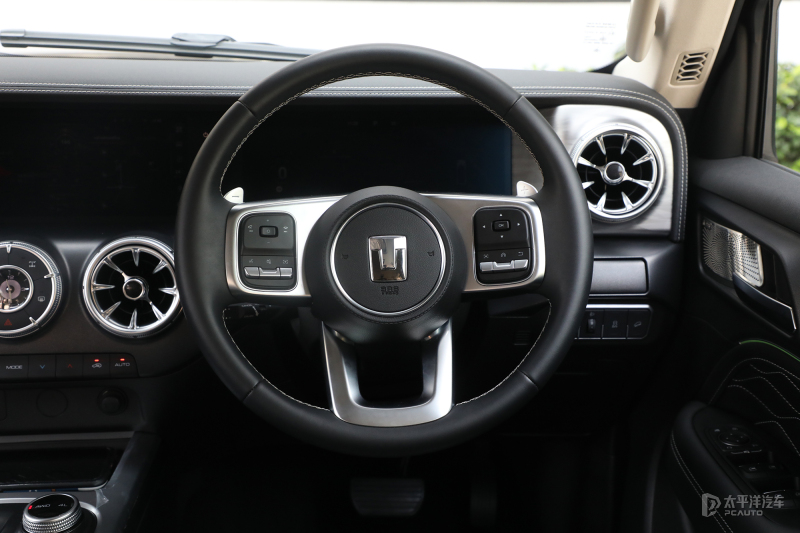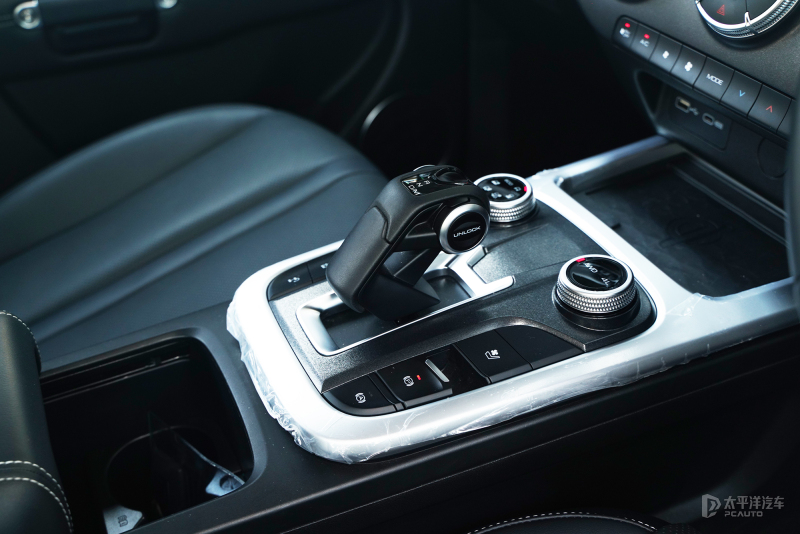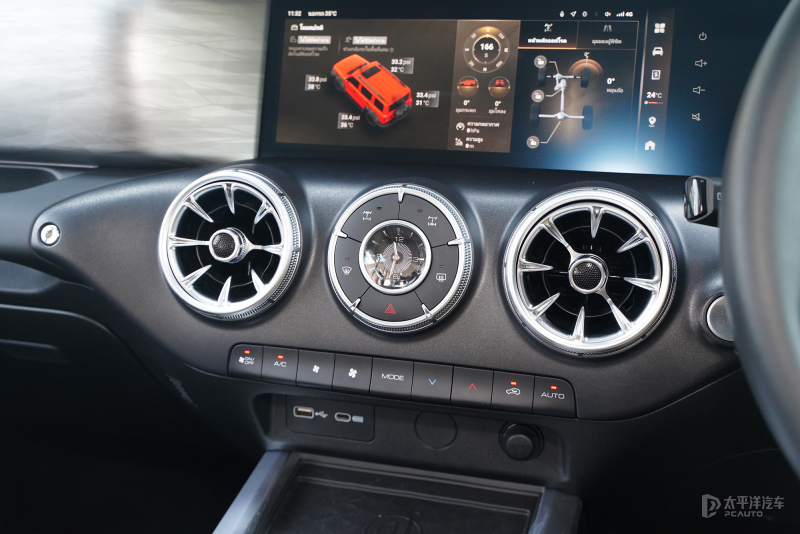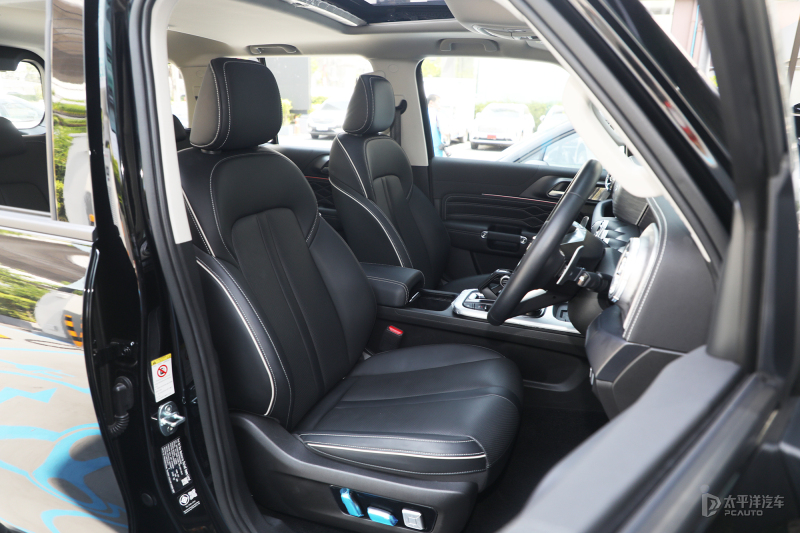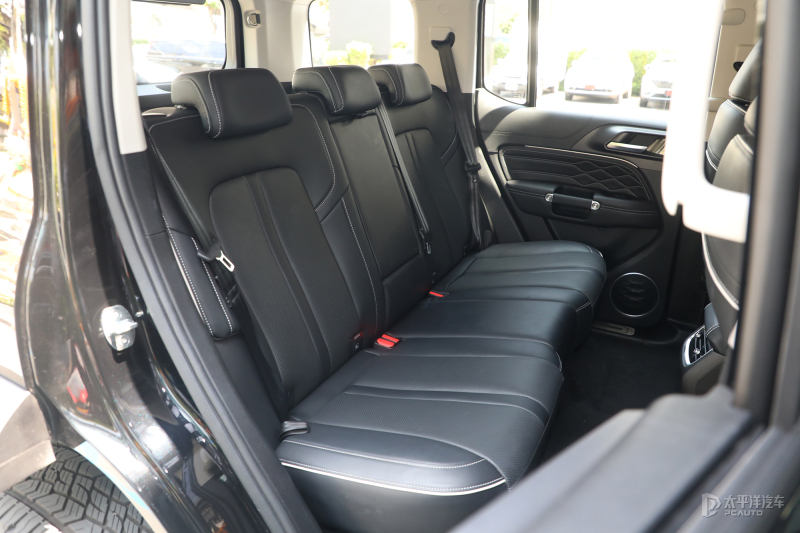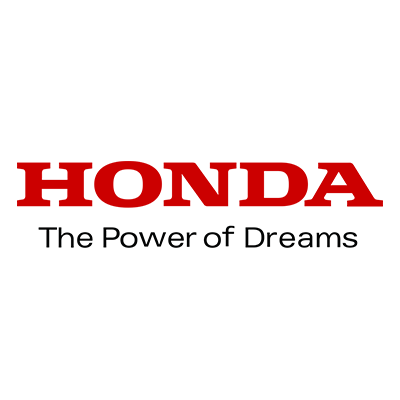Test Drive TANK 300: What does HEV Mean for a Tough-style Off-road SUV?
 Kevin WongApr 10, 2024, 04:34 PM
Kevin WongApr 10, 2024, 04:34 PM
I have checked some information about the GWM brand in the Chinese market before to understand their many products, and made a simple comparison with GWM in the Thai market. Interestingly, GWM is creating a more thorough new energy vehicle brand in Thailand, while in the Chinese market, GWM has a lot of gasoline vehicles on sale. TANK 300 is a good example.
The TANK 300 that I test-drove this time is equipped with an HEV hybrid power system, which is not available in the Chinese market. The models on sale in the Chinese market are 2.0T gasoline models and PHEV models. This raises a question for me, what different experience will the HEV system bring to a hard-core off-road SUV like TANK 300?
Basic information about the test drive model:
-Test drive model: TANK 300 HEV ULTRA
- Official guide price: 1,799,000 Thai baht
-Vehicle size: 4760 × 1930 × 1903mm, wheelbase: 2750mm
-Minimum ground clearance: 224mm
-Maximum wading depth: 700mm
-Vehicle weight: 2355kg
-2.0T engine parameters: Maximum power 244PS, peak torque 380N·m
-Electric motor parameters: Maximum power 106PS, peak torque 268N·m
-Overall power system parameters: Maximum power 350PS, peak torque 616N·m
-Four-wheel drive system: TOD timely four-wheel drive system, equipped with front and rear axle Eaton differential lock.
I. Dynamic test drive experience, the HEV system makes this car more fun to drive
Although I have not test-driven the gasoline version of the TANK 300 before, I have test-driven some SUVs that are off-road style using non-load-bearing bodies and traditional power systems, such as the JEEP Wrangler. Those cars generally give me a rough driving feel. On the one hand, typically such SUV models are large and heavy, and even if the power performance is sufficient, it is difficult to give me a nimble driving feel. In addition, the non-load-bearing body coupled with long-travel shock absorption makes the body more likely to sway from side to side. The engine noise, wind noise, and tire noise compose a symphony.
When test-driving these SUVs, what I expect is that they can bring me stronger off-road performance and allow me to enjoy different driving fun under high-intensity off-road scenarios. As for conventional driving on urban roads, I did not expect too much comfort and fun. However, TANK 300 made me feel different because it is more mature and comprehensive in its performance on daily road driving.
It needs to be explained that due to limited test drive conditions, we regretfully did not test drive this TANK 300 on the off-road field, so strictly speaking, this test drive cannot be considered comprehensive and complete.
The HEV system gives the TANK 300 a significantly more powerful performance, and this is quite evident. With the addition of the electric motor, when I fully press the accelerator pedal for maximum acceleration, the working logic of the powertrain is that both the electric motor and the engine drive the wheels simultaneously. It's important to note that the torque burst of the electric motor is very rapid, which can compensate for the engine's slow torque release, making the vehicle's initial acceleration and mid-range acceleration very aggressive. Despite the weight of this vehicle reaching 2355kg, the comprehensive torque output of the powertrain can reach 616N·m. When accelerating at full throttle, it never fails to impress me. This level of acceleration performance exceeds my expectations for it.
The characteristic of the electric motor also brings about the agile start of the TANK 300, which is crucial in congested urban areas. If it only had a 2.0T engine, I can imagine the TANK 300 would feel sluggish when starting from a stop behind other vehicles or at intersections. The heavy vehicle body would reluctantly be dragged along as the tachometer climbs, and I would need to press the throttle deeper to give it enough power for a quick start. The HEV system disrupts my mental image. The powertrain logic when the vehicle starts is to use the electric motor, which provides quick power response and a light start. At the same time, because the engine is not operating at this stage, you don't feel the dull hum and vibration of the engine at low RPM and low torque. The electric motor start makes the TANK 300 feel lighter and the power delivery more linear and smooth on city roads.
Meanwhile, the HEV system has made the TANK 300 quieter in daily driving. As mentioned earlier, the vehicle is driven by the electric motor during startup, initial acceleration, and low-speed creeping, which eliminates the noise from the engine. The overall noise control of the TANK 300 is quite good. Despite using AT tires, the actual tire noise is not as loud as expected. Moreover, during high-speed driving, the boxy shape of the TANK 300 surprisingly does not result in significant wind noise.
The operation logic of the HEV power system is excellent. On one hand, the transition of power when the engine kicks in is smooth, without noticeable jerks. On the other hand, during high-speed driving, the system can keep the engine operating in an economical RPM range, allowing the engine to independently drive the vehicle. When the engine is in cruising mode, it produces less noise and vibration, while also being more fuel-efficient.
Overall, the HEV system has given the TANK 300 more power, while bringing a more linear and flexible driving experience, as well as quiet and fuel-efficient characteristics. These features are usually shortcomings of off-road SUVs, which make the TANK 300 more mature and comprehensive to drive.
So, how about the handling and chassis feel?
In short, I feel it's a matter of comfort orientation. The steering feel varies in different steering modes, with significantly heavier feedback in sport mode, even reminiscent of a mechanical transmission sensation. However, regardless of the mode, the steering ratio is generally on the larger side, and minor adjustments to the steering wheel typically don't result in significant feedback from the front end. This allows the TANK 300 to feel more stable at high speeds, compensating for the lack of a load-bearing body and the high center of gravity.
Compared to models like the JEEP Wrangler, the suspension tuning is softer, and less rigid, which means the TANK 300 isn't as bumpy in everyday driving. The suspension offers a decent damping sensation, effectively filtering out many minor vibrations, sometimes making me forget it has a ladder frame.
However, compared to the TANK 500, Toyota PRADO, and other SUVs, the suspension of the TANK 300 is a bit stiffer. After all, it is not primarily designed for long-range cross-country travel because it focuses more on extreme off-roading. At least that's how I see it, because compared to the first two models, the TANK 300 does not place too much emphasis on comfort and luxury, but its passability is better. For extreme off-roading, suspension support is also very important, and the TANK 300 chassis seeks a balance between comfort and off-road performance.
II. Four-wheel-drive System and Static Experience
The experience of off-road performance is one of the key points of test driving the TANK 300, but unfortunately, this time we did not specifically evaluate its off-road performance. However, judging from the professionalism of the four-wheel drive system and the vehicle's passing ability, we seem to have many reasons to believe in its professionalism.
The TANK 300 model we test-drive is equipped with a TOD (Torque On Demand) intelligent four-wheel drive system. I understand that in the Chinese market, besides the TOD intelligent four-wheel drive system, there are also models equipped with BorgWarner part-time four-wheel drive system. The main difference between the two lies in the central differential of the TOD intelligent four-wheel drive system, which adopts a multi-plate clutch type, while the BorgWarner part-time four-wheel drive system adopts a toothed clutch type. The toothed clutch type seems to represent stronger off-road performance, but its front and rear axle torque distribution has only two modes: either 0:100 or 50:50. In contrast, the multi-plate clutch type central differential can make the front and rear axle torque distribution more flexible, and can flexibly adjust between 0:100 and 50:50. This can be achieved by adjusting the degree of engagement of the clutch plates.
As it is a timely four-wheel drive system, the vehicle does not have a 4H mode. Even so, this TANK 300 still offers up to 7 driving modes, as well as Eaton's electrically controlled differential lock on the front and rear axles. The vehicle is also equipped with a TANK turnaround to deal with narrow bends, as well as off-road creeping mode, slope descent control functions, and more.
The TANK 300 has a minimum ground clearance of 224mm, an approach angle of 33°, a departure angle of 34°, and a longitudinal pass angle of 23.1°, which indicates a strong passability. The vehicle's maximum wading depth is 700mm, and it is equipped with a transparent chassis function and a display screen that can show the water level outside the vehicle during wading. All these make the TANK 300 particularly professional in off-roading.
7 Driving modes:
-Normal: Normal driving mode (four-wheel drive)
-SPORT: Uses low gear high speed to provide stronger power (four-wheel drive)
-ECO: Economy mode (rear-wheel drive)
-MUD: For driving on muddy roads, disables ESC and VDC systems
-SAND: Driving on sandy roads, enable the electronic differential lock
-SNOW: Driving on slippery roads, slower throttle response, four-wheel drive
-4L: Low-speed four-wheel drive mode, adjusts a high transmission ratio to increase traction

The high passability has a lot to do with the appearance design of the TANK 300. The exterior of TANK 300 has very obvious characteristics of a hard-core off-road SUV, such as the adoption of large black bumpers at the front and rear, and the wheel arches and side skirts are also surrounded by black, connected with the front and rear bumpers, which is extremely wild. The style presented by this design is similar to the JEEP Wrangler. Although the body of the TANK 300 is not so square, with some more rounded corners, the overall shape and temperament are somewhat similar.

In terms of interior, the TANK 300 is equipped with a 12.3-inch liquid crystal instrument panel and a 12.3-inch touch screen. The two large screens are embedded in the center console instead of adopting the common floating type, which seems to give people a sense of security. What's odd is the round button area in the middle of the two air outlets under the center screen, which puts the front and rear axle differential lock and the front and rear window defogging function together, this function combination is a bit strange. Also, TANK has a fixation on clocks, they are equipped on both TANK 500 and TANK 300. As for TANK 300, I think this clock is unnecessary, replacing it with a small electronic display to show direction and altitude information would seem more professional.
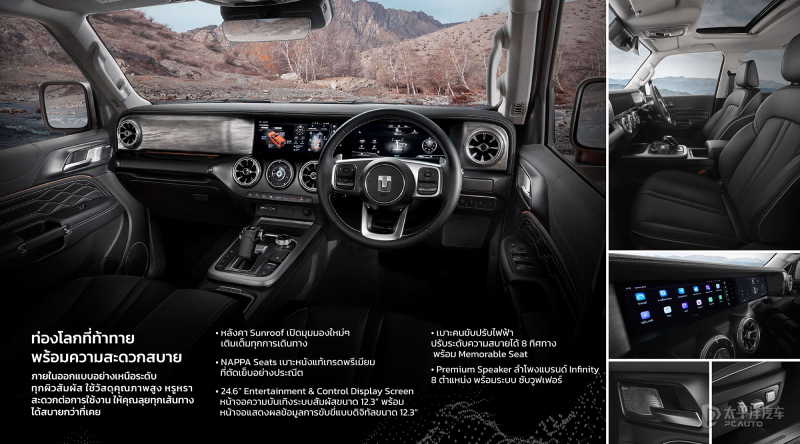
You can see that the interior design of TANK 300 is intended to create the effect of a high sitting position and a wide view, so the position of the door panel is designed to be relatively high. The view of the TANK 300 is also very good due to its high sitting position. Together with the large rearview mirror, the blind spots on both sides of the vehicle will be reduced.
The space in the back row is also very generous. A 178cm tall adult male sitting in the back has plenty of space for both head and legs.

TANK 300 also has a similar performance to TANK 500 in terms of safety and intelligent configuration. For example, it can also control the car's doors, windows, and air conditioning remotely via a mobile phone, allowing the vehicle to ventilate and cool down before going out in hot weather. In addition, you can also view the vehicle's location, tire pressure, etc. on your mobile phone.
The two sub-models of TANK 300 are equipped with an intelligent driving assistance system, but the ULTRA model has more functions, including the IIP automatic parking system, ARA trace reverse, RCTA&RCTB reverse blind spot detection, and emergency braking functions.
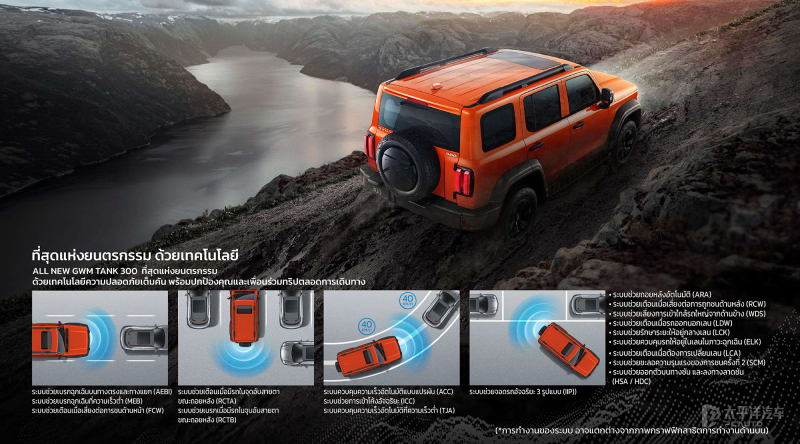
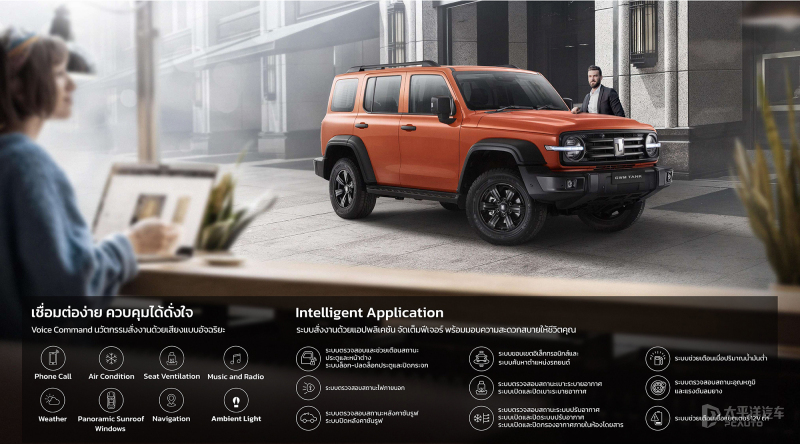
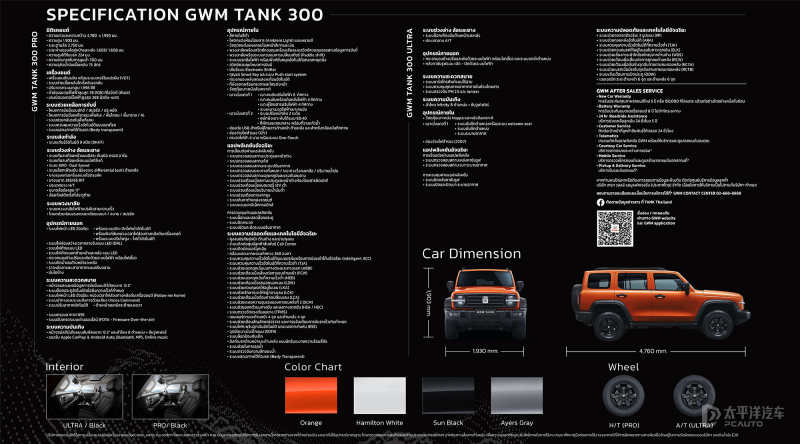
Test Drive Conclusion:
After the test drive, I can affirm that the HEV system brings a very different driving experience to the TANK 300. Not only can it show its advantages in off-road scenarios, but it can also provide practical and comfortable travel experiences like urban SUVs when driving on city roads.
The HEV system gives the TANK 300 more abundant power, nimbler startups, lower fuel consumption, and a quieter driving experience. And what I think is important is that, unlike PHEV and EV systems, the HEV system won't change our traditional driving habits. There is no need to charge and no worry about pure electric range. The smaller onboard battery can reduce the weight of the TANK 300 and make it safer and more reliable when off-roading.
If any infringement occurs, please contact us for deletion
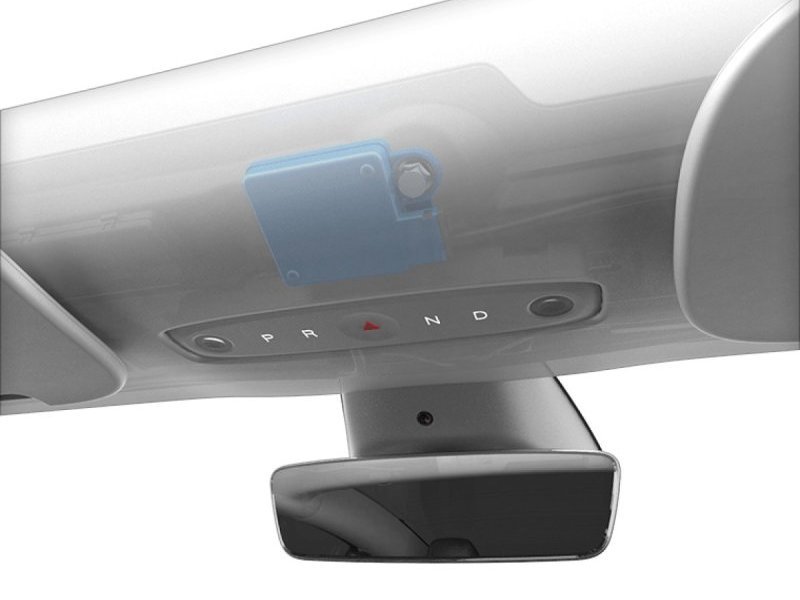
Tesla pushes 2025.2.6 update in North America, activating the hidden millimeter-wave radar in Model Y
[PCauto] In February 2025, Tesla rolled out the 2025.2.6 software update for 2022 and subsequent Model Y models in North America.The highlight of this update is the activation of the hidden millimeter-wave radar hardware in the Model Y cockpit. This AWR6843 chip supplied by Texas Instruments, has three transmitting antennas and four receiving antennas, operating on a frequency band between 60-64 GHz, with a horizontal field of view of 120 degrees and a vertical field of view of 60 degrees.Once a
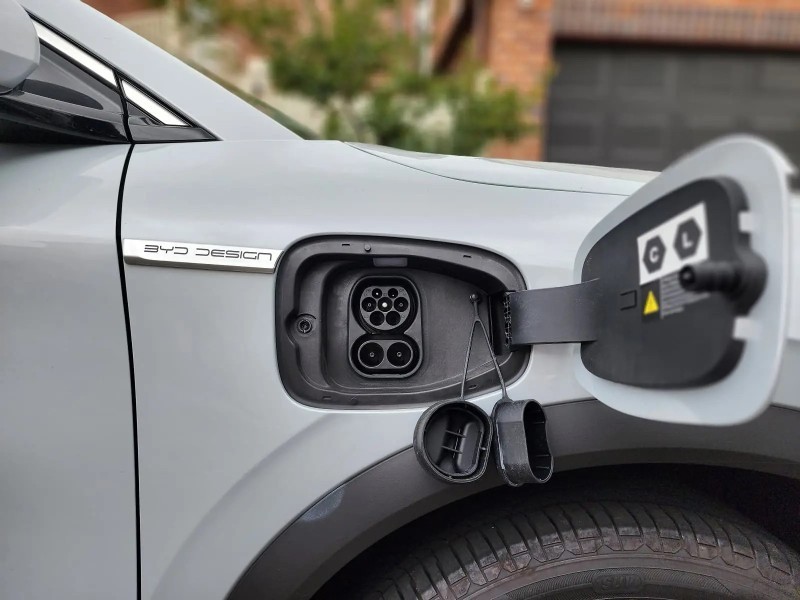
BYD Plans to Promote 1000V High Voltage Super Charging Stations and Its Models on a Large Scale
【PCauto】Recently, the news that BYD plans to massively implement a 1000V high-voltage supercharging platform has attracted widespread attention. It is reported that this platform will be launched in the middle of March this year and supports super-fast charging above 5C. After its release, it will quickly be popularized to its own models and large-scale construction of 1000V supercharging stations.This move will undoubtedly set off a wave in the new energy vehicle market. Let's delve into the te
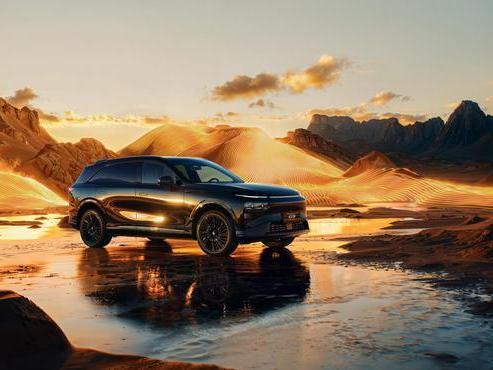
XPENG G9 is about to be launched in China, bringing 66 upgrades in features
【PCauto】XPENG has recently announced that the 2025 XPENG G9 will soon be launched in China. Although the official did not announce the time and price, the success of XPENG G6 and X9 has rekindled expectations for the once-failed G9 by XPENG. In terms of appearance, the G9 continues the X-BOT FACE 3.0 design language, with a closed grill at the front paired with split-style headlights on both sides, new two-tone collision colors and all-black body styles, with a petal-style wheel hub. Combining
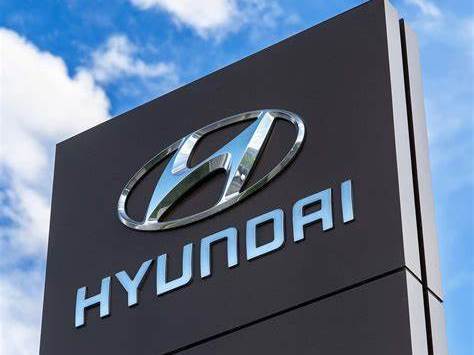
Hyundai is to launch an all-solid-state EV battery production line, but who's leading?
【PCauto】News reveals that Hyundai will launch an all-solid-state EV battery production line next month, with a ceremony to be held at the next-generation battery research center in Uiwang, South Korea.This production line will serve as a pilot production for the all-solid-state 'Dream' EV battery. In 2023, Hyundai proposed plans to become a leader in the electric vehicle battery field, investing over $9 billion in the battery sector within 10 years, including Lithium Iron Phosphate (LFP) and Lit
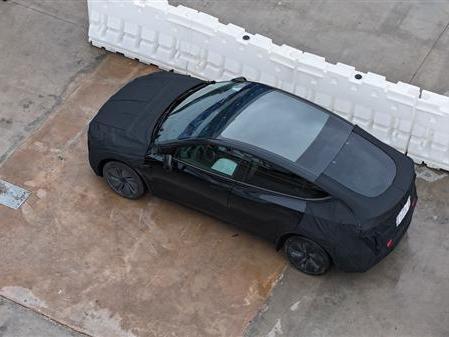
Tesla's Texas factory was caught testing vehicles, suspected to be Model Q
【PCauto】Recently, a blogger captured a disguised Tesla test vehicle while filming a drone over Tesla's Texas super factory. This discovery has sparked widespread speculation, as the new Model Y has been openly pre-ordered and there is no need to disguise, so it is speculated that this car may be the cheapest model Model 2 or Model Q (internal code name Project Redwood) that Tesla plans to launch.Speaking of this mysterious Model Q, Musk has already revealed that it will be a "smaller" version of
Popular Cars
Car Compare

